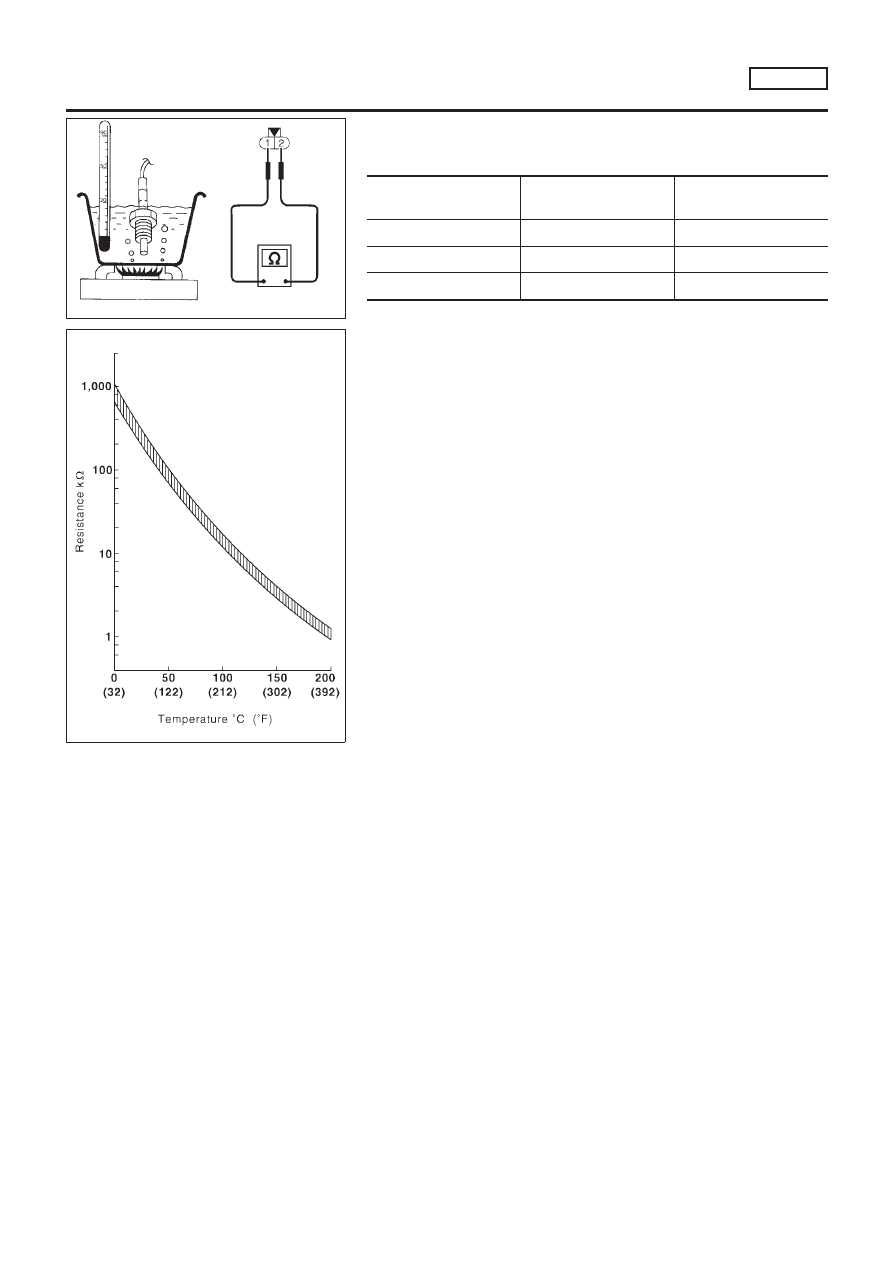Nissan Almera Tino V10 (2001 year). Manual - part 89

SEF611Y
SEF068X
EGR TEMPERATURE SENSOR
NLEC1826S07
Check resistance change and resistance value.
<Reference data>
EGR temperature
°C (°F)
Voltage
V
Resistance
M
Ω
0 (32)
4.56
0.73 - 0.89
50 (122)
2.25
0.074 - 0.082
100 (212)
0.59
0.012 - 0.014
If NG, replace EGR temperature sensor.
EGR VOLUME CONTROL SYSTEM (WHERE FITTED)
SR20DE
Component Inspection (Cont’d)
EC-985